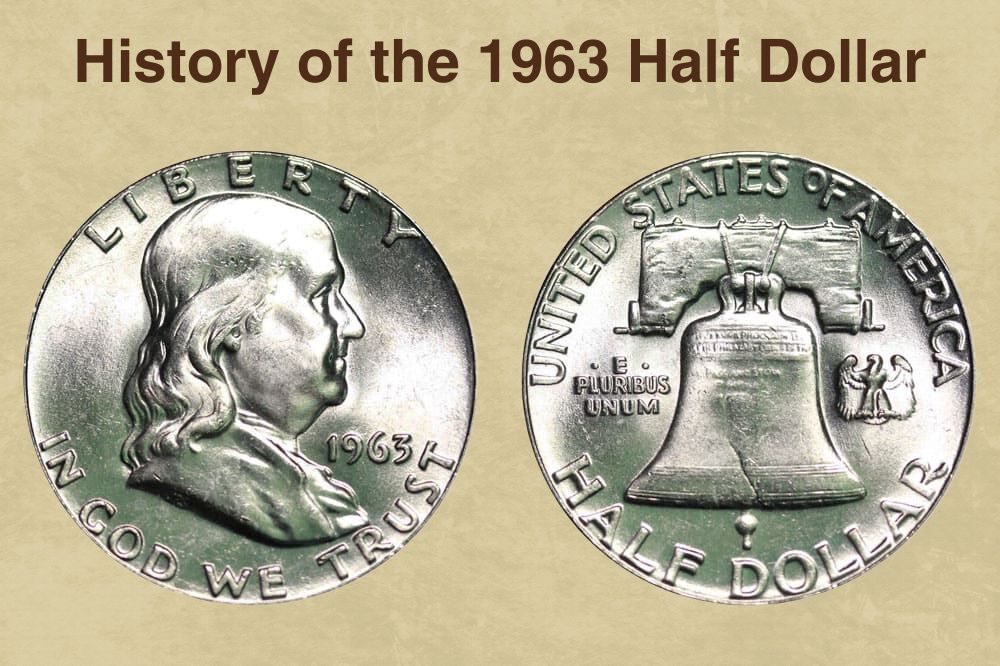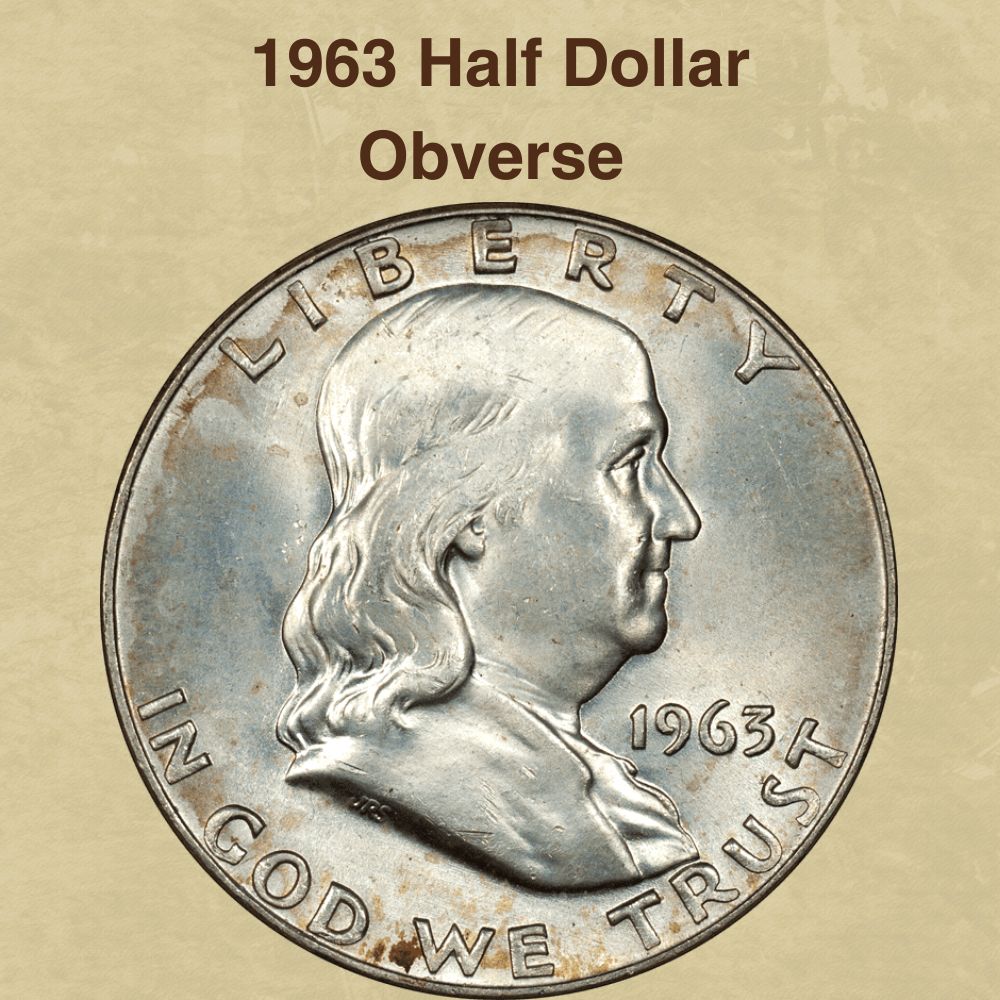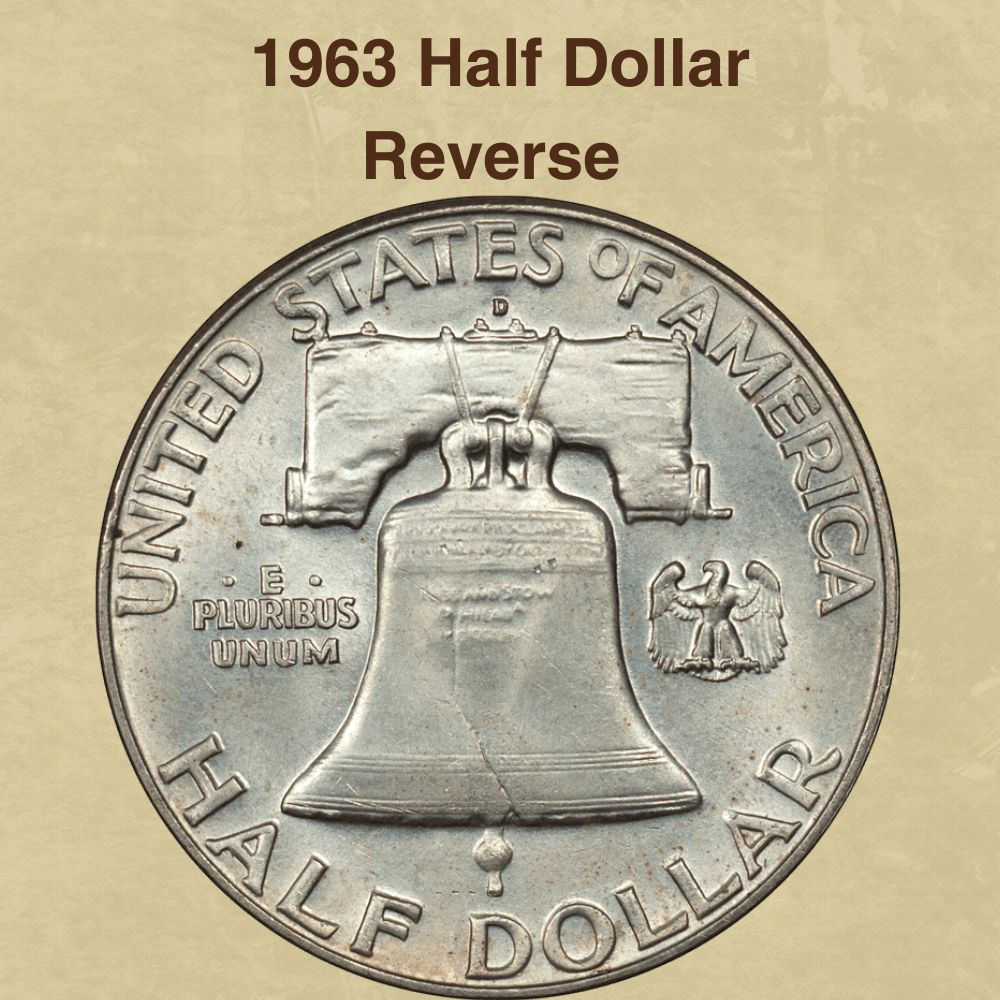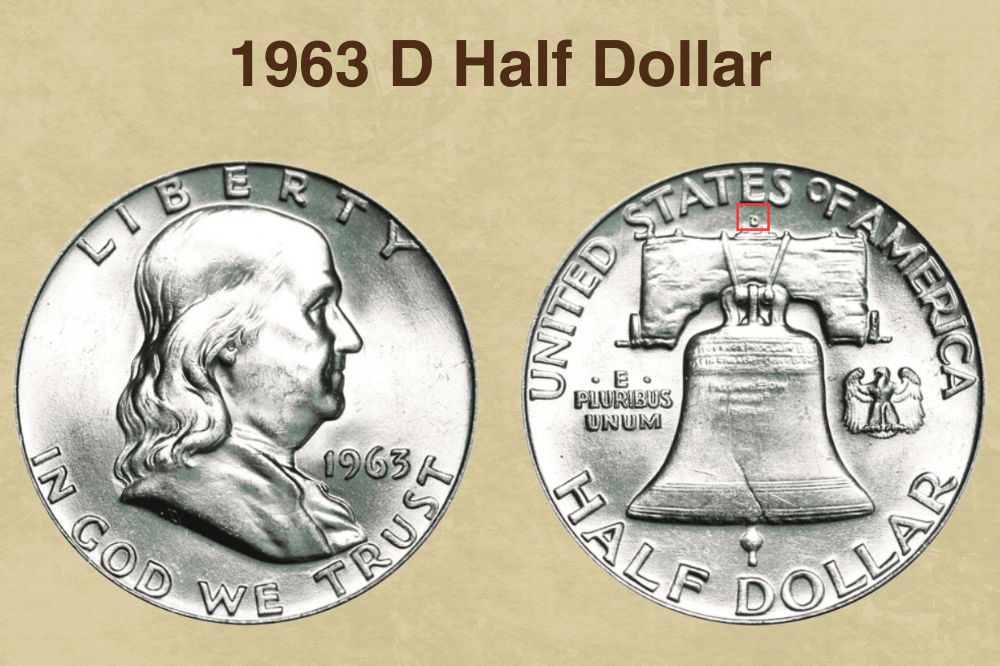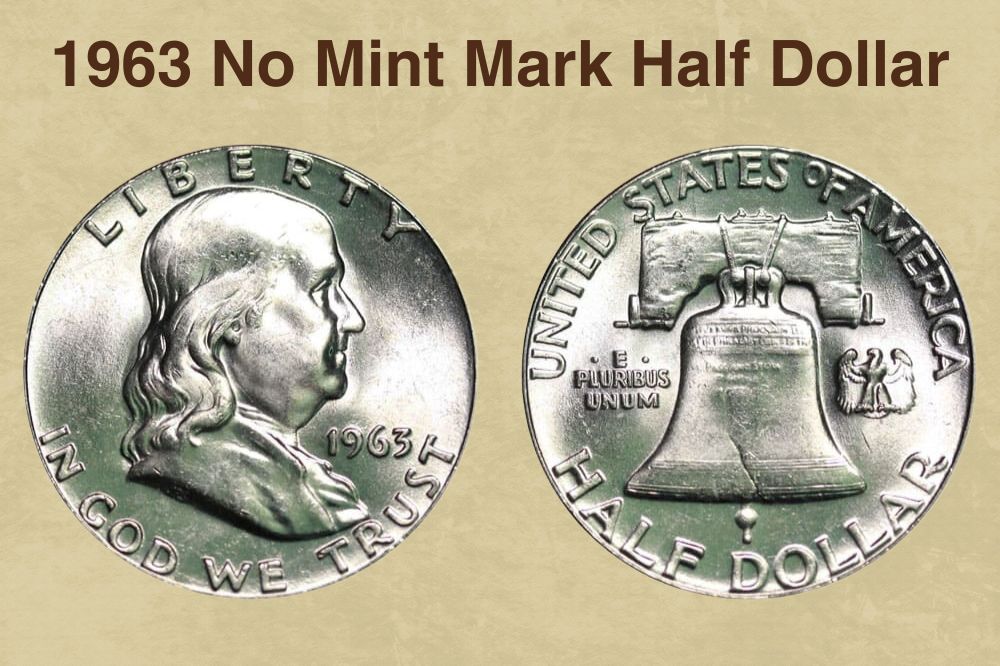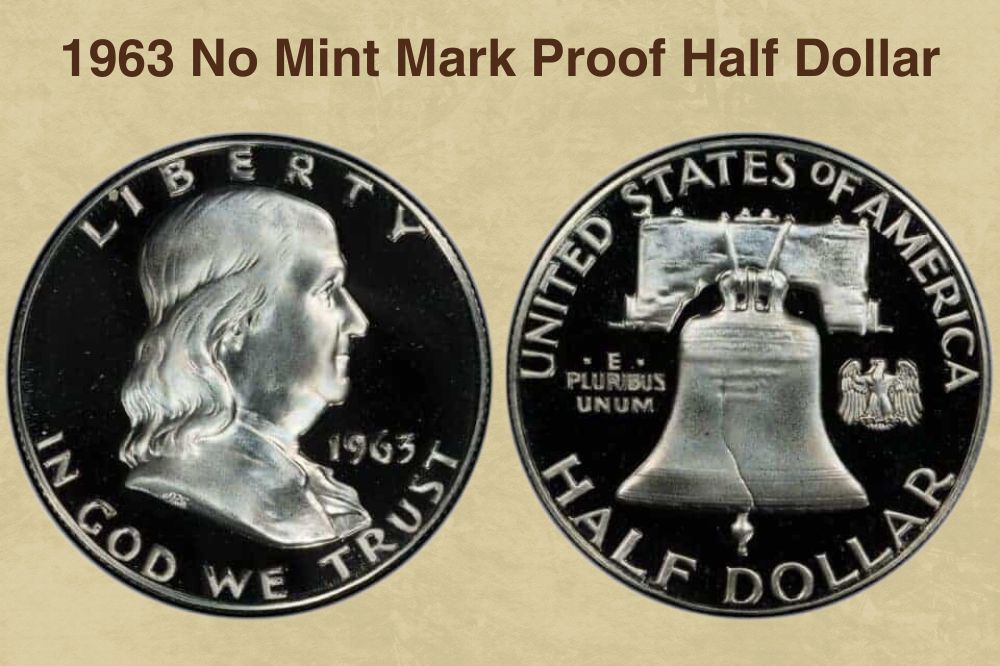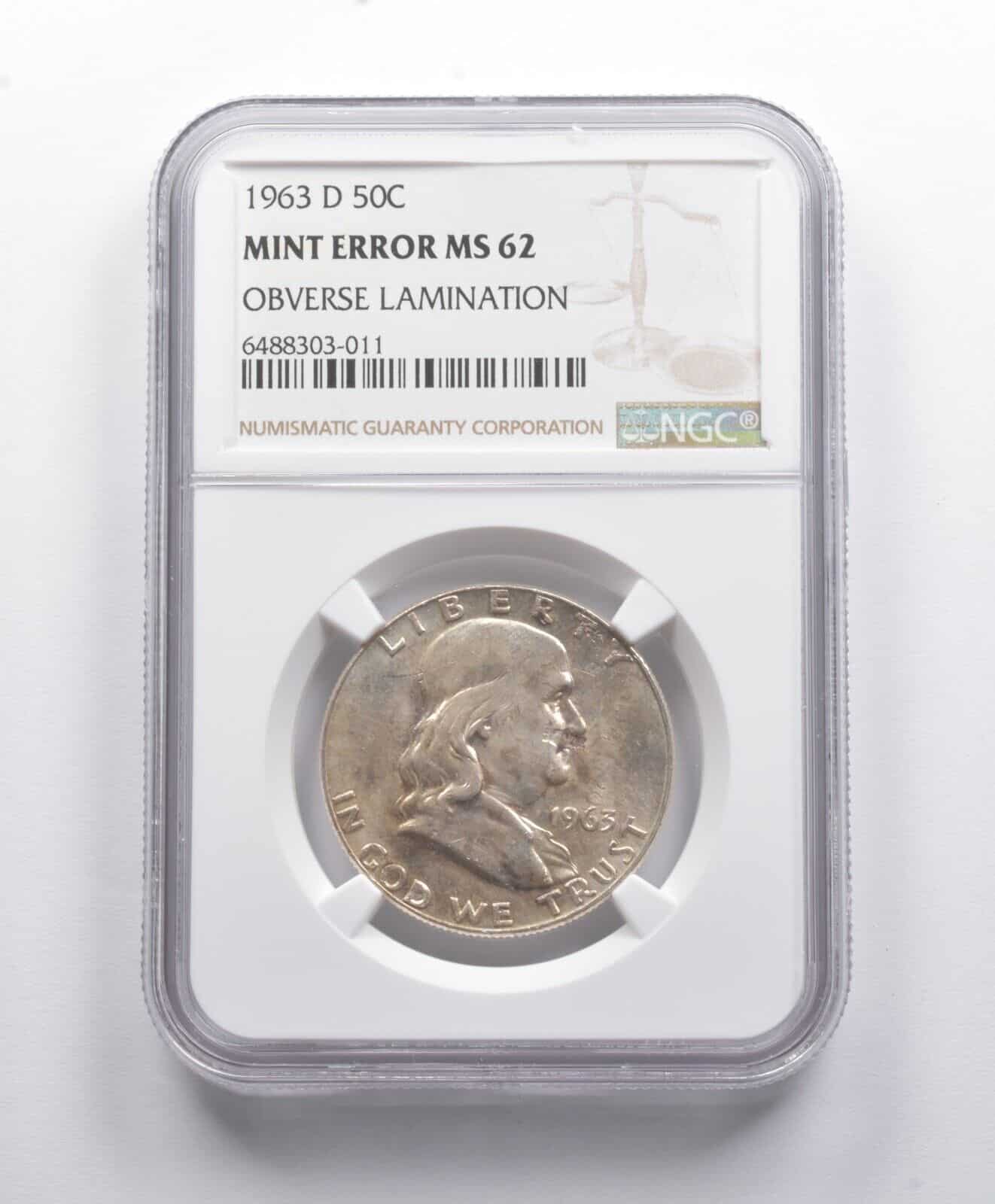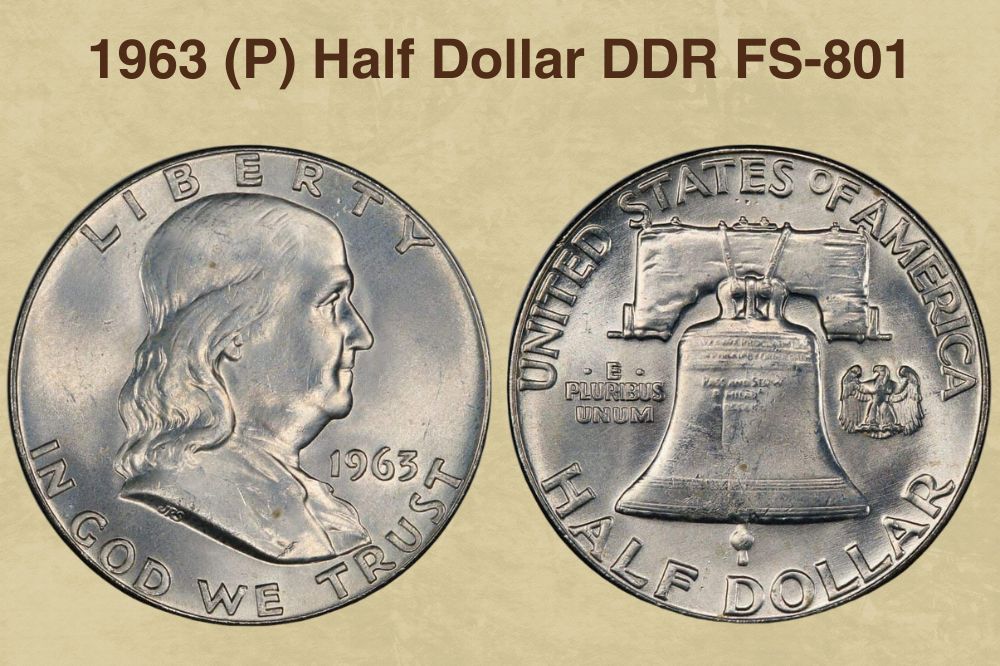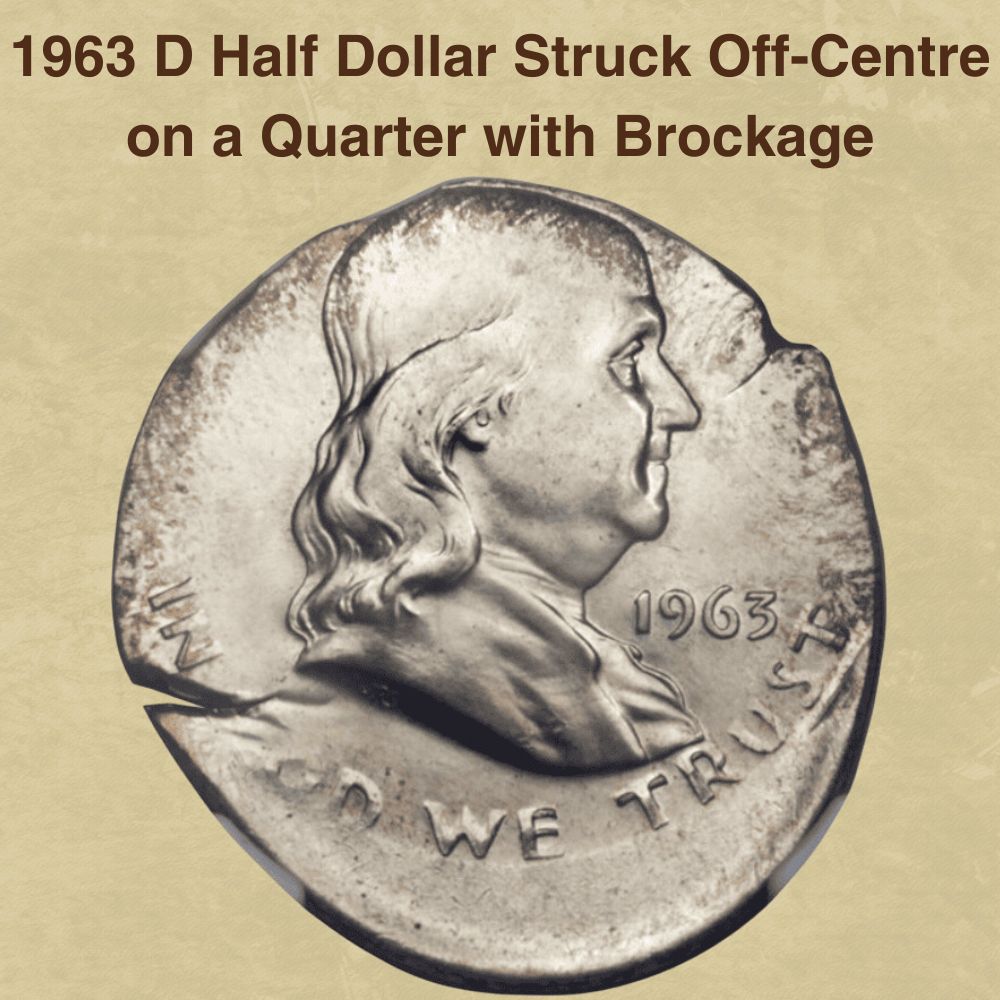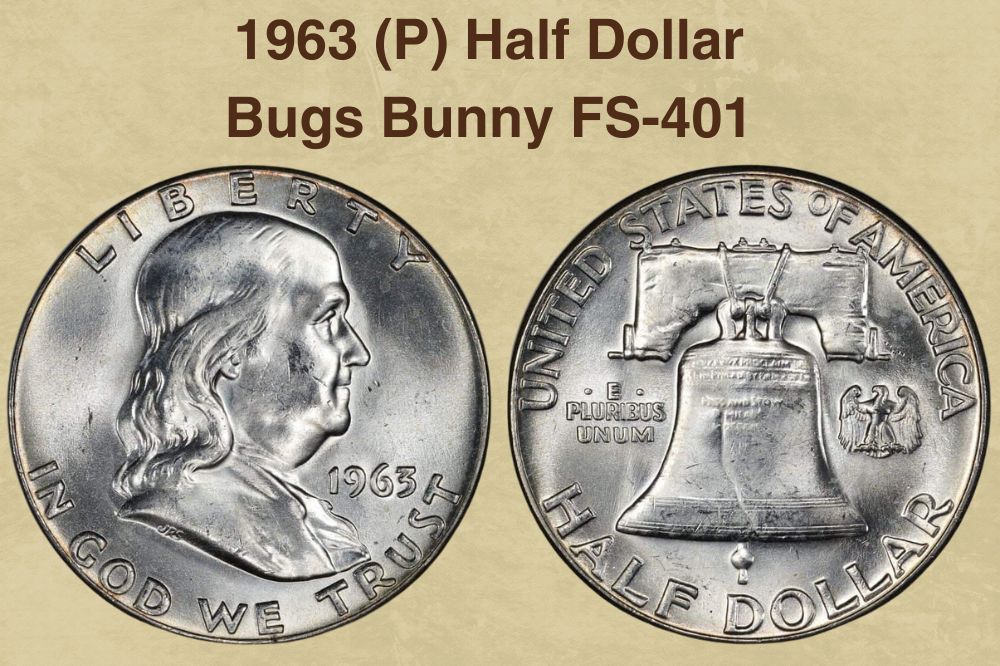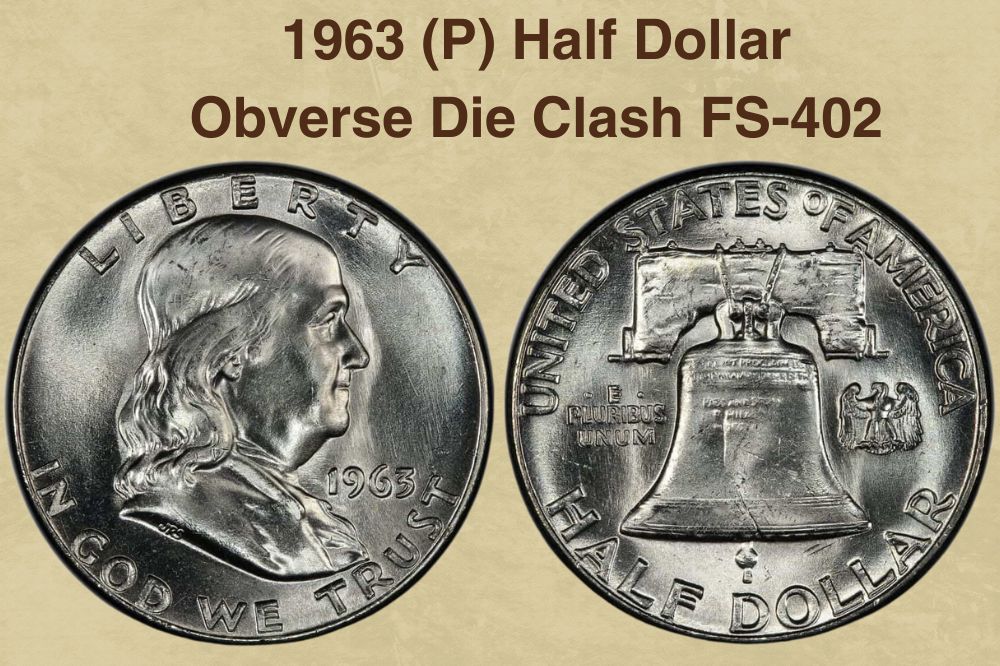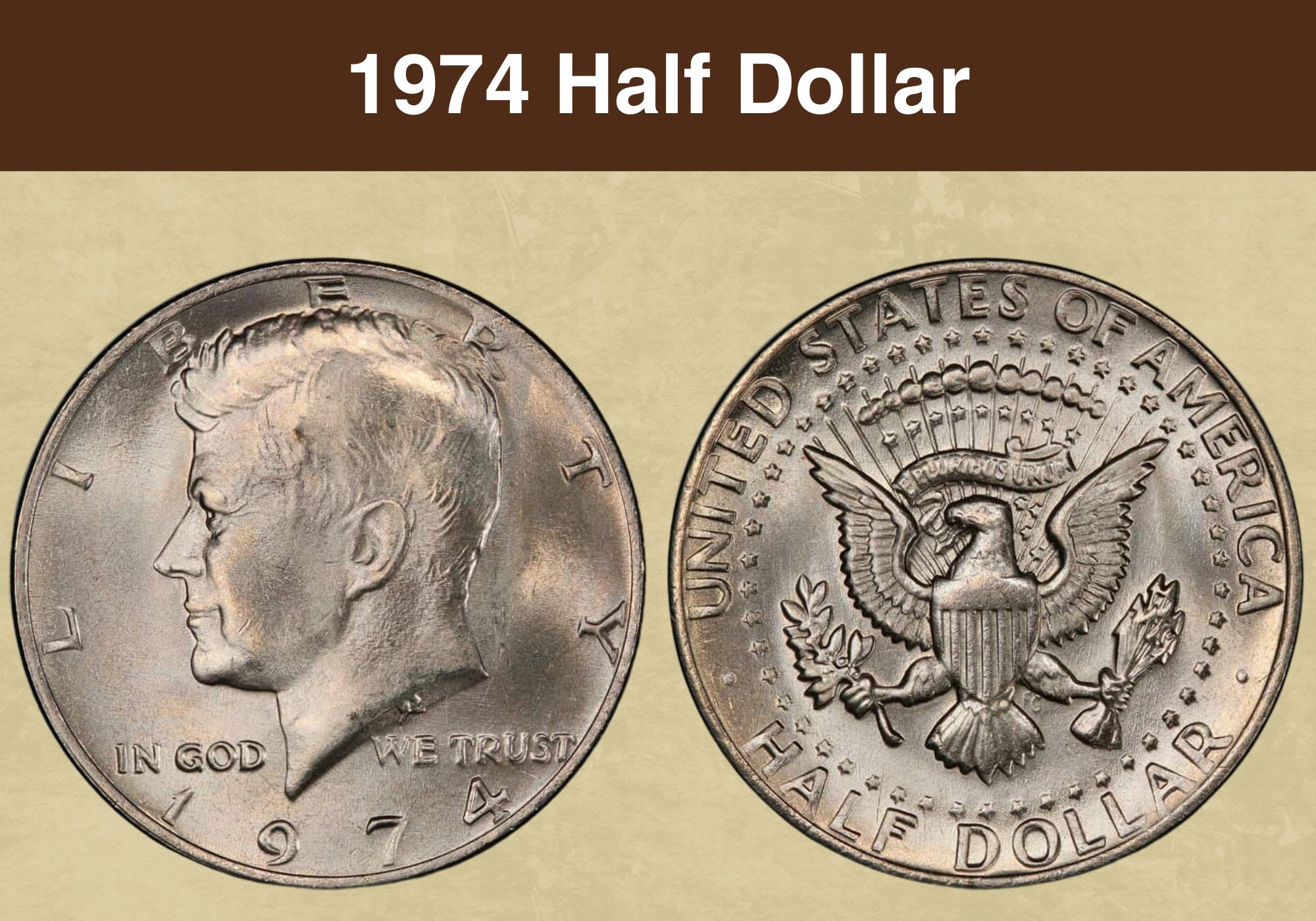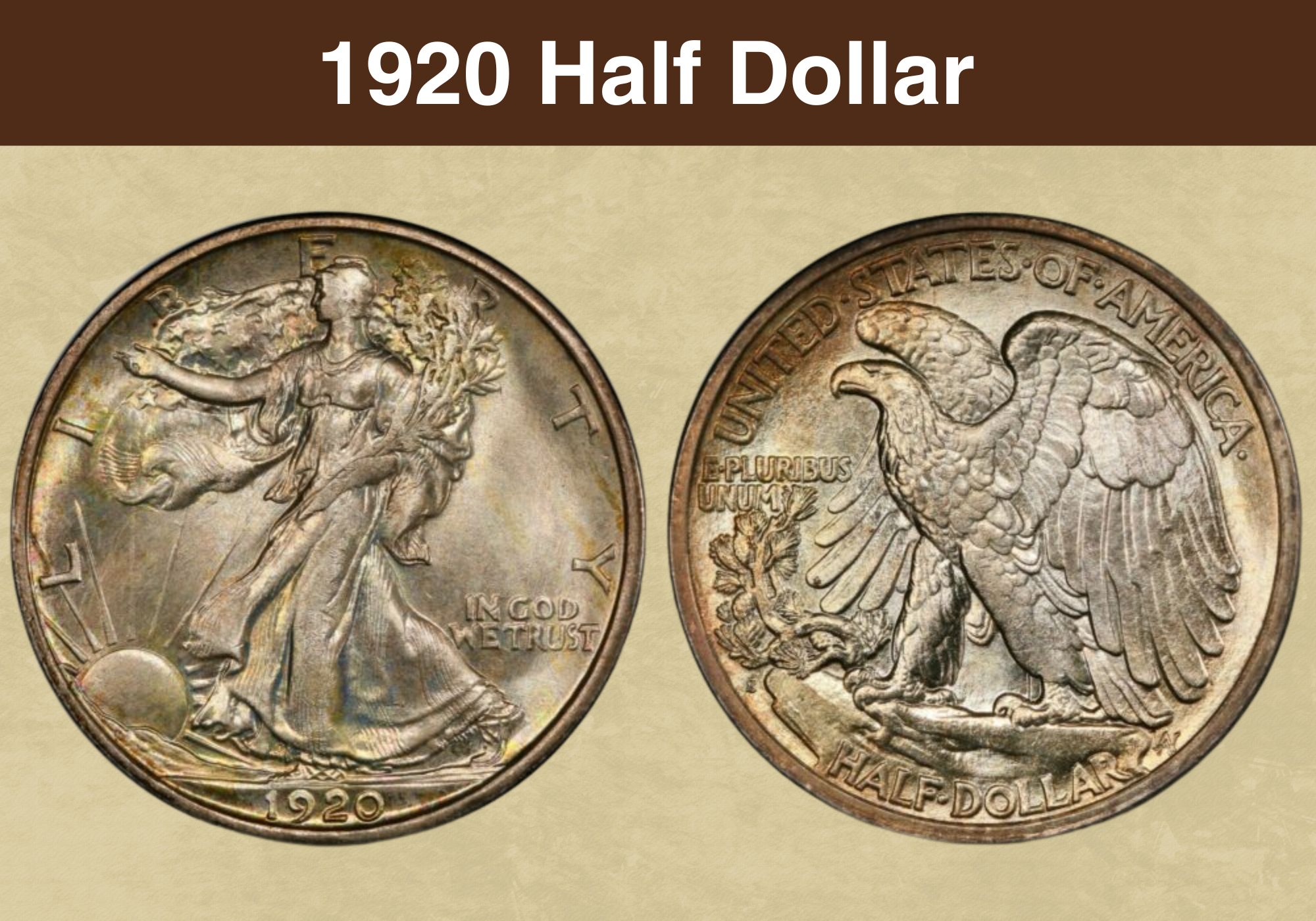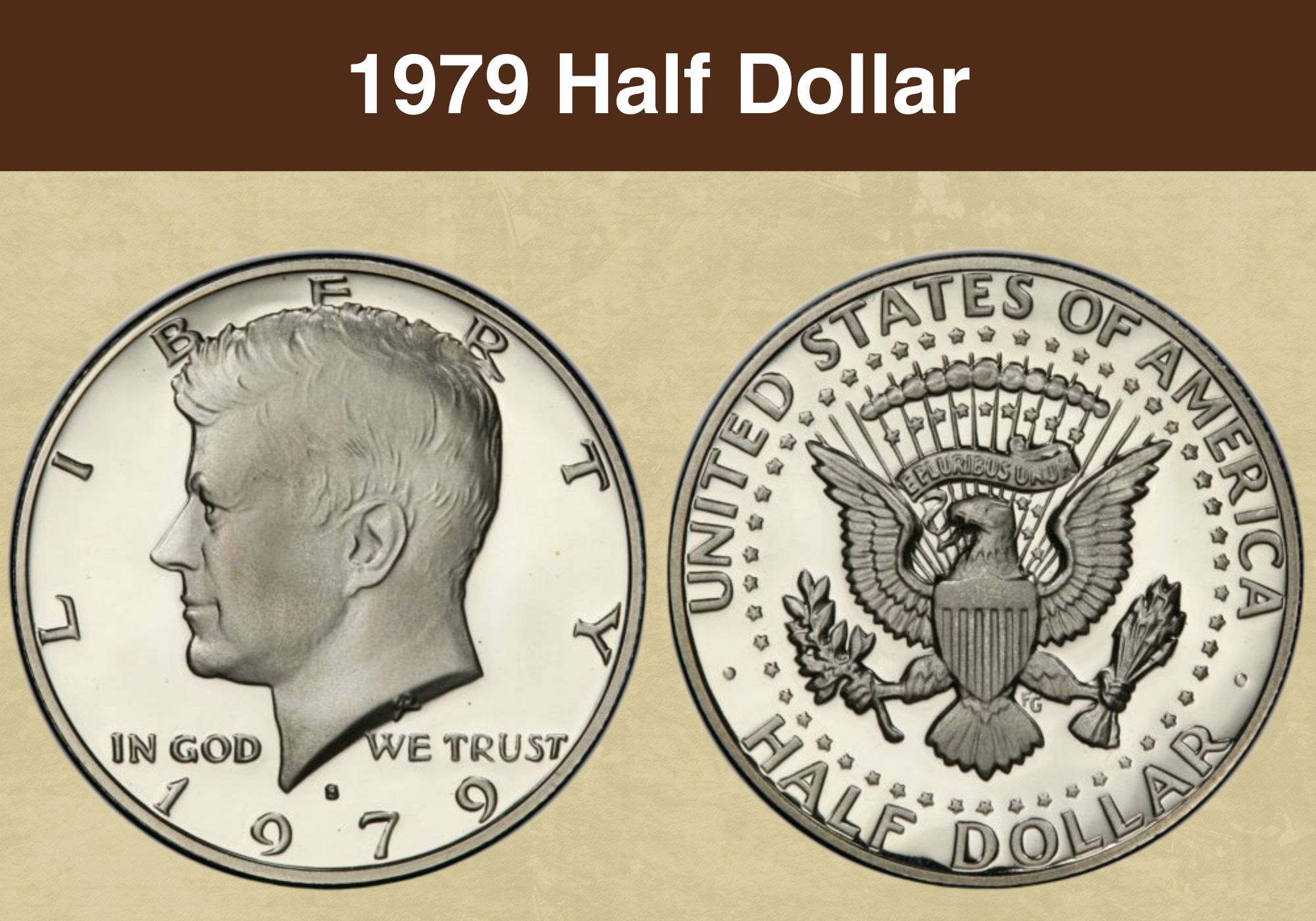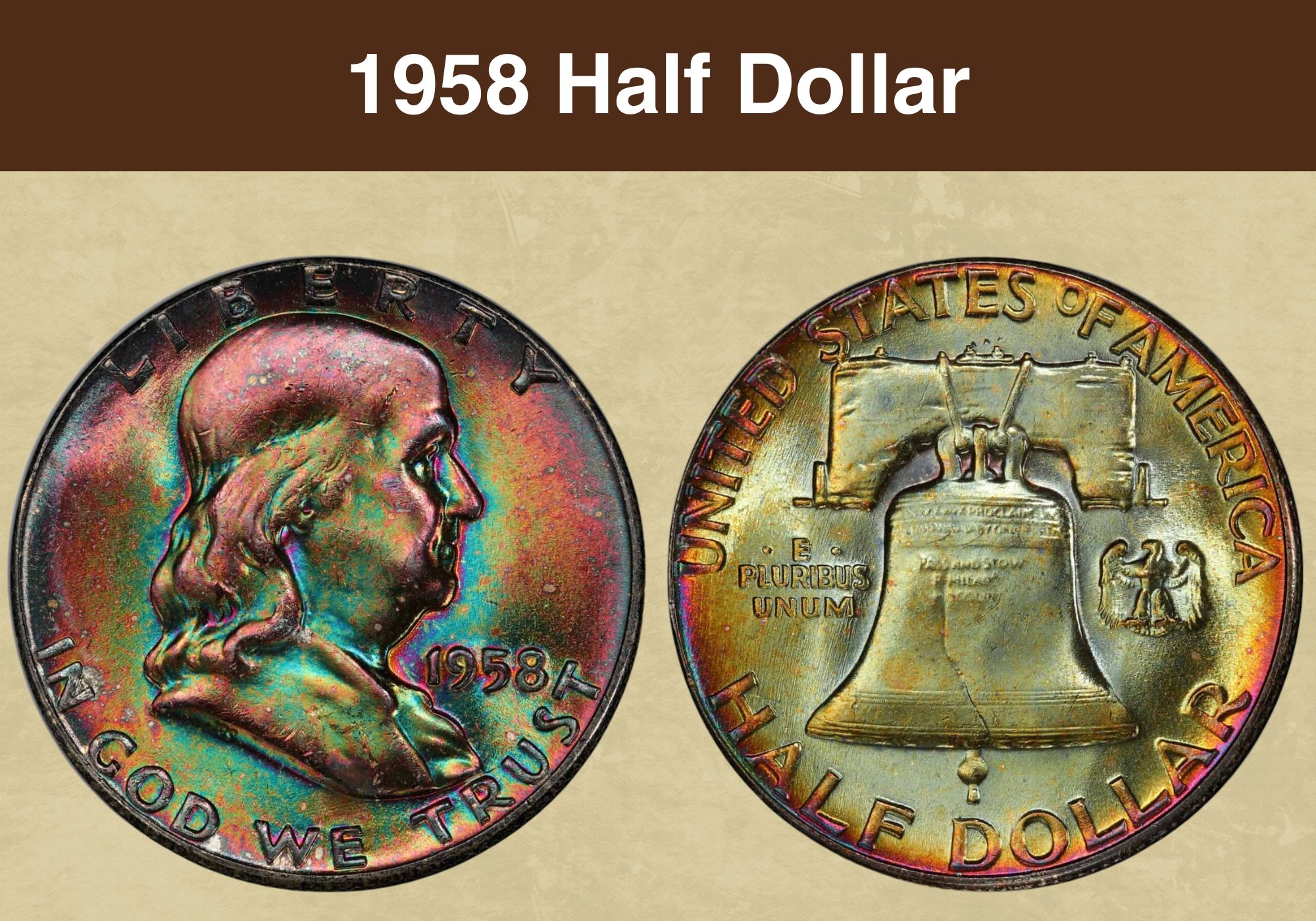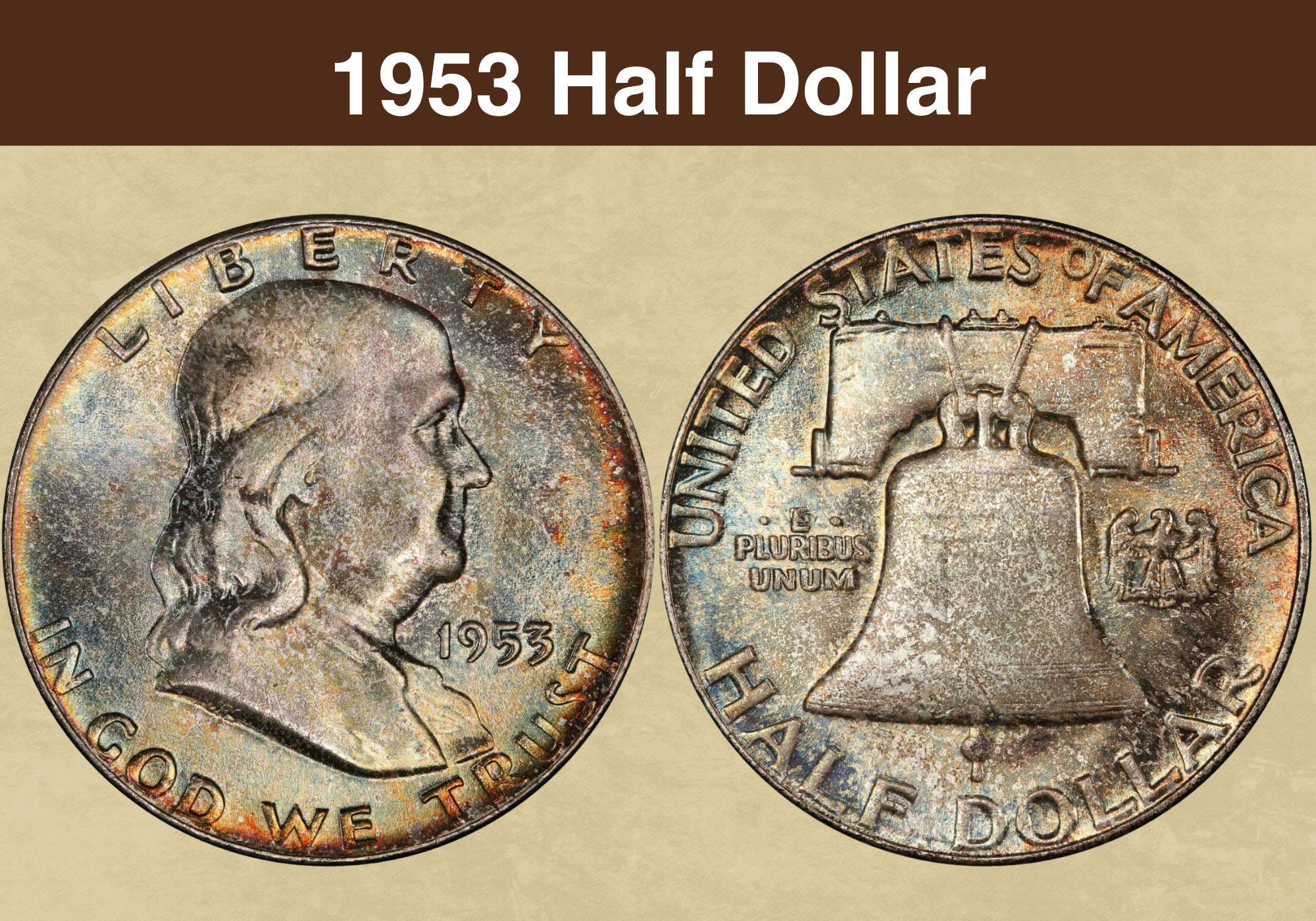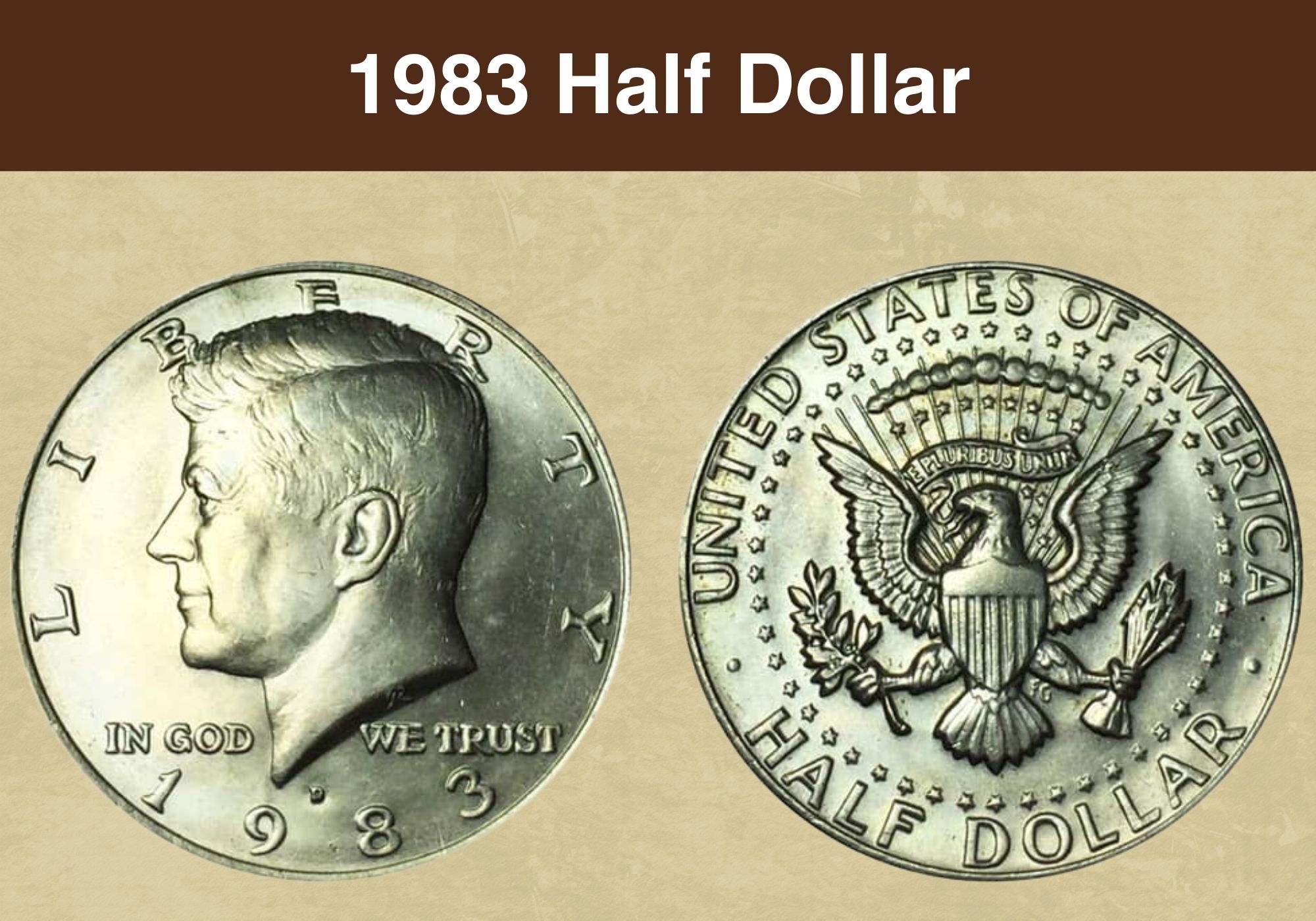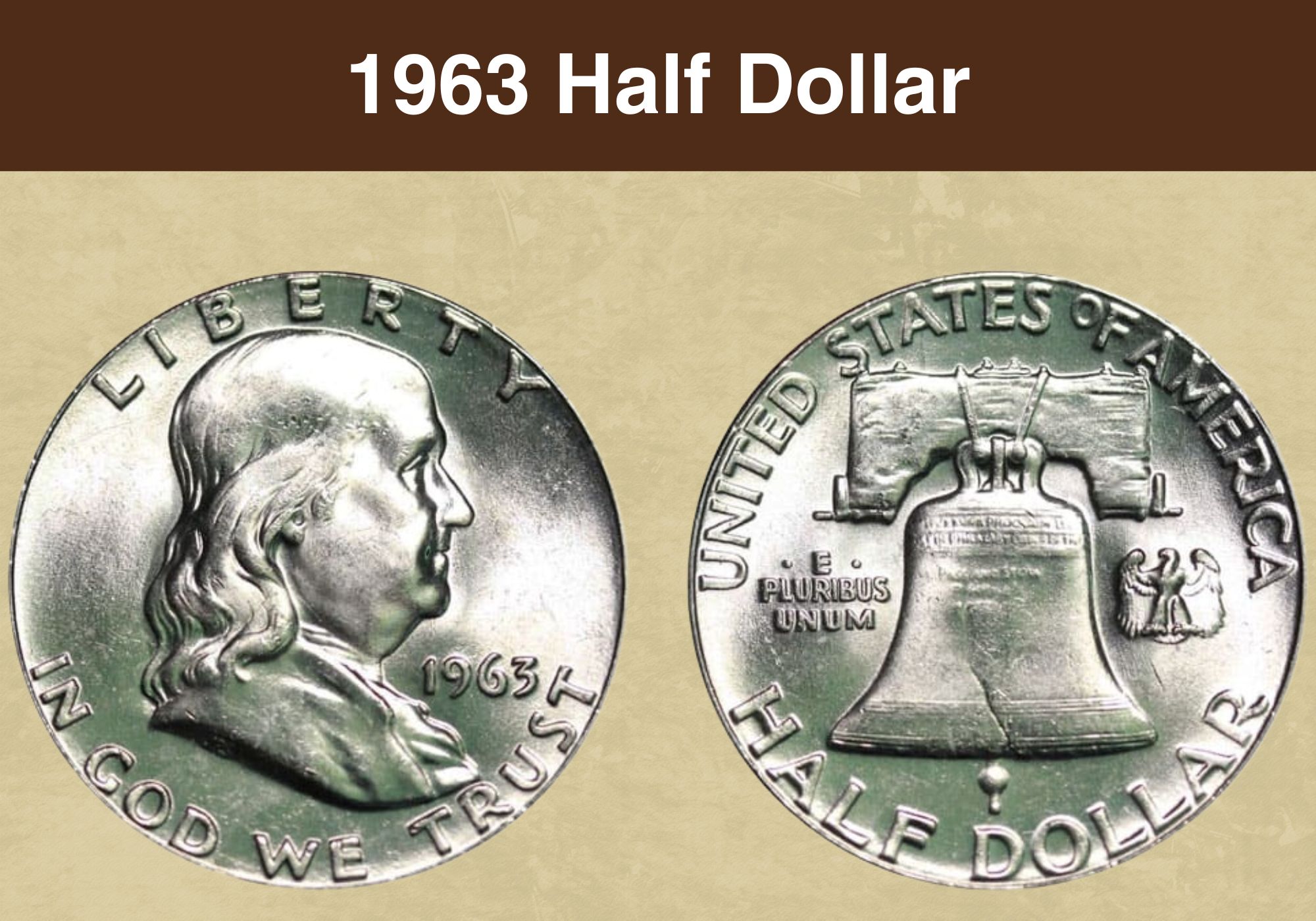
Coin Value Contents Table
- 1963 Half Dollar Value Chart
- History of the 1963 Half Dollar
- Features of the 1963 Half Dollar
- 1963 Half Dollar Grading
- 1963 Half Dollar Value Guides
- 1963-D Half Dollar Value
- 1963 No Mint Mark Half Dollar Value
- 1963 No Mint Mark Proof Half Dollar Value
- Rare 1963 Half Dollar Error List
- Where to Sell Your 1963 Half Dollar ?
- 1963 Half Dollar FAQ
Sadly, 1963 was a landmark year for the Half Dollar. It’s when John F. Kennedy was shot, necessitating the redesign of the Franklin Half Dollar. The coin wasn’t worth much at the time because nobody knew it was about to be phased out. But spikes in silver prices were causing a shortage as well. Let’s review these facts as we explore the 1963 Half Dollar Value.
1963 Half Dollar Value Chart |
||||||
| Coin | Extremely / Extra Fine XF 45 | Mint State MS 60 | Mint State MS 65+ | Mint State MS 66+ | Mint State MS 67 | Proof PR/PF 69 DCAM |
| 1963-D Half Dollar | $20 | $20 | $55 | $2,150 | $2,700 | – |
| 1963-D FBL Half Dollar | – | $20 | $300 | $4,000 | $22,500 | – |
| 1963 (P) No Mint Mark Half Dollar | $21 | $20 | $75 | $1,550 | – | – |
| 1963 (P) No Mint Mark FBL Half Dollar- | – | $20 | $2,500 | $85,000 | – | – |
| 1963 (P) Proof No Mint Mark Half Dollar | – | – | – | – | – | $5,000 |
History of the 1963 Half Dollar
In the world of numismatics – that’s the study of coins, medals, and tokens – some samples are profitable from the get-go. That’s why they’re hoarded as soon as they’re released. These include commemorative coins or redesigned series. But other coins only become significant after the fact e.g. transitional coins or milestone events. The 1963 Half Dollar is one of those.
To understand this fully, let’s step back in time. In the late 1800s, Congress and the US Mint clashed over the authority to change coin designs. If they wanted to introduce a new kind of coin, they’d have to get permission from Congress, where political interests and partisan debate could delay the coin’s progress forever! The 1890 Coinage Act was their compromise.
It allowed the mint to launch new coins without congressional approval, but only if the coin had circulated for 25 years. It also gave the mint leeway to hire external artists for the task. Due to this law, the Franklin Half Dollar (1948 to 1963) had no plans to change. But when JFK was assassinated, the decision to put him on a coin was unanimous. Hence the redesign.
The JFK Question
John F. Kennedy, the 35th US President, was extremely popular with the public. So he was to be honored on a Quarter or a Dollar. But $1 coins have never been popular in circulation, they wanted his presence celebrated on a coin that people used every day, and JFK’s widow – Jackie O – didn’t want to displace George Washington on the Quarter. It came down to 50c.
As expected, people stashed the first few years of Kennedy Half Dollars. They didn’t circulate reliably until the 1970s. But as a consequence, the 1963 Half Dollar gained interest as well, since it was the final year of the Franklin Half Dollar. Of course, the Franklin Half Dollar was significant in its own right. Benjamin Franklin was the first non-president on US currency!
He was a Founding Father, writer, diplomat, scientist, publisher, politician, and philosopher. He also sits on the current $100 bill. Curiously, he didn’t want to be on American money at all and wasn’t placed on the coin until he’d been dead for more than 150 years. On a much lighter note, he hated bald eagles and felt America’s national bird should be a wild turkey!
Also read: 13 Most Valuable Franklin Half Dollars Worth Money
Features of the 1963 Half Dollar
To describe the features of the 1963 Half Dollar, you need a few technical terms. The front side is the obverse, the back side is the reverse, the thin side is the edge, and the raised rim is the collar. The images are devices and the words are mottos or legends. The blank discs that make coins are called planchets, and the background behind the images is called the field.
The Obverse of the 1963 Half Dollar
The heads side shows Benjamin Franklin facing right. Liberty floats above his head and In God We Trust runs along the lower rim. The mint date is on the right, in front of his neck. The designer’s initials, JRS for John R. Sinnock, are toward the left of the shoulder cut-off.
The Reverse of the 1963 Half Dollar
The tails side shows the Liberty Bell with a tiny eagle on its right and E Pluribus Unum on its left. The mint mark is directly above the bell. The legend United States of America runs along the upper rim of the coin while the denomination, Half Dollar, goes along the lower coin rim.
Other Features of the 1963 Half Dollar
Although the coin shortage had begun, the 1963 Half Dollar was still 90% Silver and 10% Copper. It weighed 12.5g and had a reeded edge. It measured 30.61mm in diameter (1.21”) and was 1.8mm thick. It contained 0.36 troy oz of fine silver, which was in high demand!
Also read: 13 Most Valuable Kennedy Half Dollar Worth Money
1963 Half Dollar Grading
The surest way to grade a coin is to send it to one of the established coin assessors e.g. PCGS, NGC, or ANACS. But this costs at least $30 before shipping, so you can start by comparing your coin against online samples. If you’re sure the coin is worth more than $300, then you can mail it for certification. Also, look out for FBL i.e. Full Bell Lines. They add a lot of value.
| # | Grade |
|---|---|
| 1 | Basal State-1 |
| 2 | Fair |
| 3 | Very Fair |
| 4, 5, 6 | Good |
| 7, 8, 10 | Very Good |
| 12, 15 | Fine |
| 20, 30 | Very Fine |
| 40 | Extremely Fine |
| 50 | About Uncirculated |
| 60 | Mint State |
| 65 | Mint State |
| 70 | Mint State |
Please check our grading guides to know your coin scale, It’s the necessary step to know the exact value of your coin.
Check out now: How to Grade Franklin Half Dollar?
1963 Half Dollar Value Guides
In 1963, the Half Dollar was worth more as molten metal than cast coinage – that’s why folk were stashing them. They were only minted in Philadelphia and Denver. The mint doubled the volumes of the previous year to replace the hoarded coins. That’s why the Franklin Half Dollar is still a top source of junk silver today aka ‘silver stacking’ aka ‘poor man’s bullion’.
1963-D Half Dollar Value
The Denver Mint made 67,069,292 Franklin Half Dollars in 1963, all with the D Mint Mark. In March 2014, an MS 63 sold for $7,344. To date, PCGS has received almost 2,000 coins in that grade so their July 2023 estimate is down to $26. The highest grade at NGC is MS 67 while at PCGS it’s MS 66+, estimated at $2,150. But an MS 67+ FBL was $16,800 in 2019.
1963 No Mint Mark Half Dollar Value
In 1963, the Philadelphia Mint made 22,164,000 Business Strike Franklin Half Dollars. Also known as Regular Strikes, these coins are intended for everyday transactions. (As opposed to collectible coins.) They had no mint marks. In August 2001, an MS 66 sold for $20,125. But 165 have been submitted to PCGS so far, meaning they’re estimated at $475 in July 2023.
They’ve also received 6 coins graded MS 66+ so those are estimated at $1,550. Meanwhile, FBL samples are much more valuable. On 26th September 2019, an MS 66+ FBL sold for $85,188. Only two coins are known in this grade, so the July 2023 estimate is still high at $85,000. But half a step down, with 9 known samples, an MS 66 FBL is $15,500 in 2023.
1963 No Mint Mark Proof Half Dollar Value
Between 1955 and 1965, the San Francisco Mint was closed, so proof-making moved back to Philadelphia. And in 1963, they made mirror-like proof dimes. These have a super shiny field and a hazy device. The textured areas are pickled in acid wash. Conversely, the shiny parts of the die are scrubbed with horsehair while the blanks – aka planchets – are pre-burnished.
The mint does this by tumbling them in a vat filled with 6mm stainless steel beads. The blanks are then rinsed and struck, giving them that reflective shine. The first few coins show the strongest difference between the dull and glossy bits, so they’re Deep Cameo or Ultra Cameo, usually 50 to 100 coins. Next come the cameo coins, and finally the ordinary proofs.
In 1963, the Philadelphia Mint made 3,075,645 Proof Half Dollars without mint marks. On 8th December 2022, a PR 65 sold for $4,700. Meanwhile, an eBay vendor sold a PR 69 CAM for just $1,299 on 31st March 2010. And in 2018, a PR 69 DCAM sold for $9,000. Since then, PCGS has received more than 20 coins graded PR 69 DCAM, so their 2023 value is $5,000.
Also read: 11 Most Valuable Half Dollars In Circulation
Rare 1963 Half Dollar Error List
Rare high-grade coins are quite expensive. But even in average condition, coins that have recognized mint errors can earn you extra cash. On the 1963 Half Dollar, these mint mistakes include the Bugs Bunny, doubled die reverses (DDRs), and die clashes. Let’s look through some widely acknowledged 1963 Half Dollar Errors and see how they translate in hard cash.
1963 (P) Half Dollar Ragged Clip Error
The metal that eventually becomes a coin starts life as a coiled sheet. This goes through a blanking machine which punches it into discs called planchets, leaving behind a layer full of holes. Sometimes, these leftovers get accidentally struck into coins, but they’ll have curved, straight, or ragged clips on the sides where the holes were. In MS 64, one of these was $260.
1963 (P) Half Dollar Defective Planchet Error
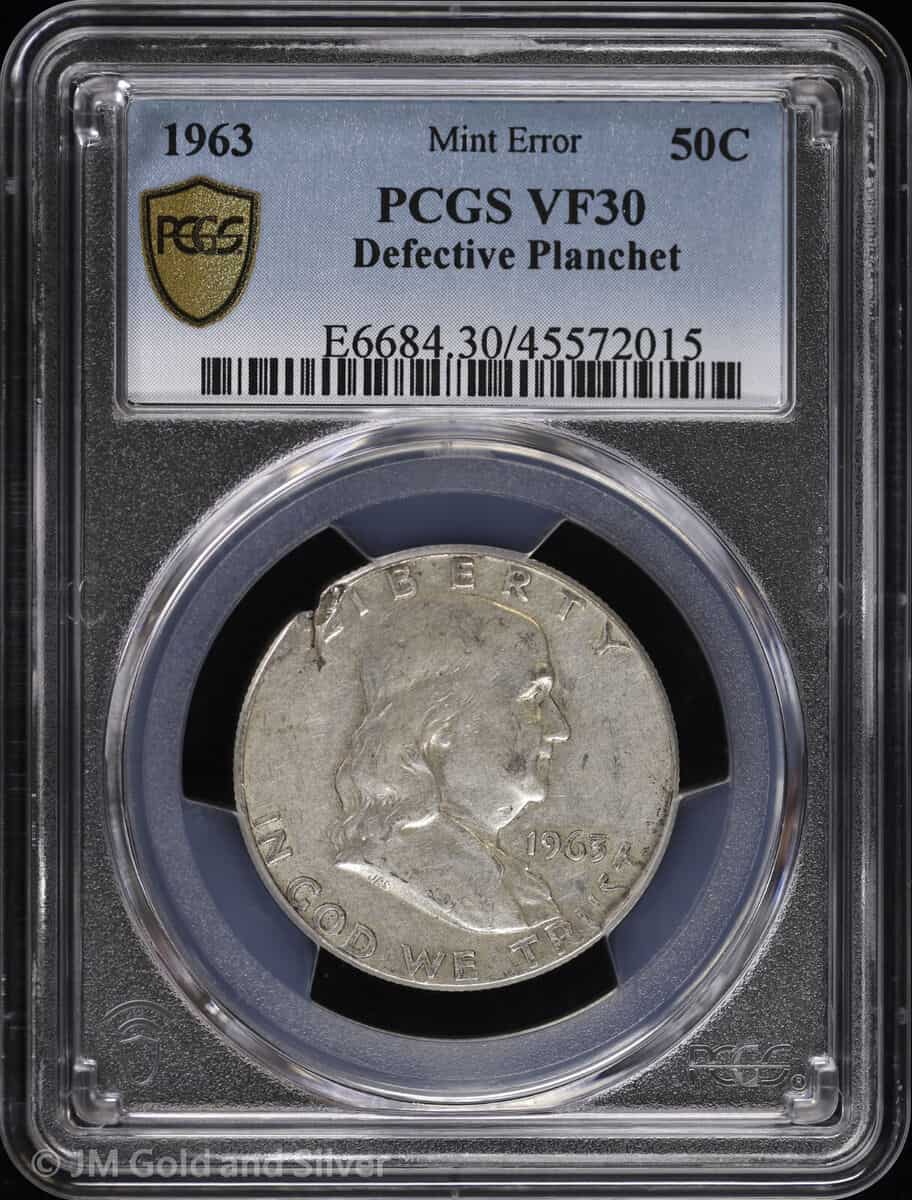
A defective planchet isn’t the same as a clipped one. Clipped blanks are in good condition – the coin just got struck on a spot with a hole. But defective planchets got damaged during formation so when the die struck the coin, the force broke the metal apart and/or separated some of its layers. Exposed lower layers are called lamination errors. In MS 65, it was $180.
1963-D Half Dollar Lamination Error
We’ve just explained what a lamination error is. You can see it more clearly on clad coins because the copper and silver or nickel have such a strong contrast. On this coin though, only 10% is copper, so minor laminations would uncover the inner silver layers instead of copper ones. The flaw can look like pockmarks, cracks, or bright sections. They sell for $50 to $450.
1963-D Half Dollar Struck on a Dime Planchet
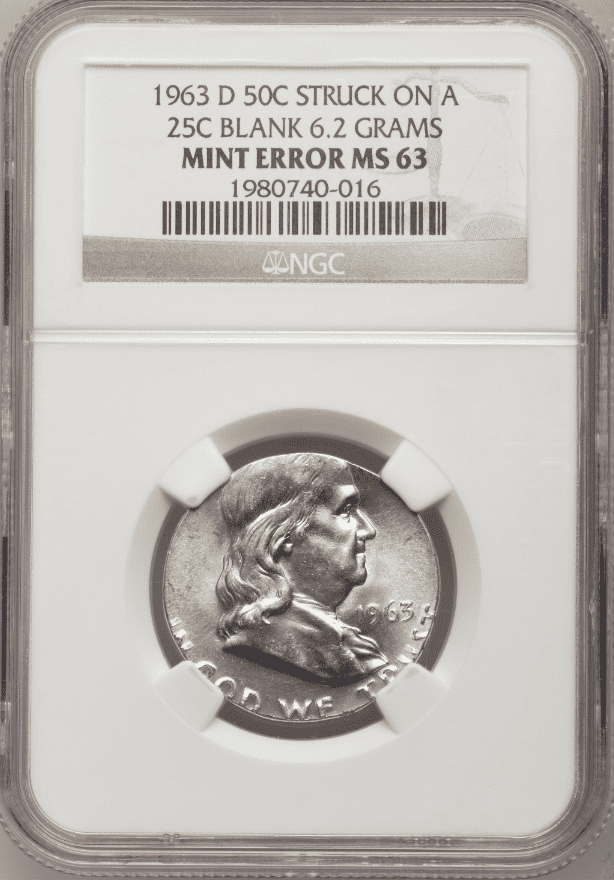
Every planchet sheet has a specific mix of metals and is cut into predetermined diameters depending on the intended face value. So sometimes, a coin is struck on a planchet meant for another denomination. In this case, a 50c was struck on a 10c blank. Since dimes are smaller, part of the design got chopped off. Also, the coin is much lighter at 2.5g. An MS 63 is $7,000.
1963-D Half Dollar Struck on a Penny Planchet
On the coin we’ve just looked at, the 30.61mm design was truncated onto a 17.91mm disc. But both coins were silver, so to the untrained eye, it might just look like the coin went into a chop shop. But in this case, the dime was struck on a 1c blank whose diameter is 19.05mm. Pennies are copper, so the color discrepancy is instantly noticeable. MS 63 BN is $4,933.
1963-D Half Dollar Struck on a Nickel Planchet
Here’s another wrong planchet error, but this time it’s a 5c blank. The error happens when a blank of the wrong size and/or metal somehow slips into a different vat and gets fed into the press. You can usually tell if some of the words or sections of the image are sliced off. Also, the coin is lighter and the rim is missing. It sold for $5,864 in MS 64 and $2,000 in MS 66.
1963-D Half Dollar Struck Thru Staple Error
The mint is a busy place filled with all sorts of materials. Sometimes, one of those rogue items gets between the die and the blank. It might be a metal shard, a piece of tape, or some fabric. In this case, it was a staple, and it left a gash on the lower reverse of this coin. Even in the medium grade of AU 55, it sold for $880 because the staple stayed attached to the coin.
1963 (P) Half Dollar Mated Pair Indented by a Penny Planchet
A mated pair or bonded pair is a twin set of coins with simultaneous errors. It might be a die cap and the brockage below it, or an overstruck coin and the one above that blocked it. The twins are sold together for better pricing. Here, a 50c was struck on a 1c planchet (MS 66). It then got stuck on the die, double-striking the coin below it (MS 62). They’re worth $20,000!
1963 (P) Half Dollar DDR FS-801 Error
DDR means doubled die reverse. It’s a type of hub doubling that happens if the die moves between hub strikes. This causes the second impression to land a little to the left or right of the first one, creating a sort of double-vision effect. This flaw is copied to all coins made by that die. MS 65 was $1,080 in 2018. But 50 were sent to PCGS so it’s down to $185 in 2023.
1963-D Half Dollar Struck Off-Centre on a Quarter with Brockage
Coins that have multiple errors can fetch much higher prices thanks to the piggyback effect of each mint mistake. In this case, we have a wrong planchet (25c), struck off-center or O/C with reverse brockage. This means a previous coin got stuck and blocked the back die from fully stamping the coin. Plus it’s deformed! In MS 65, this 6.24g combination was $4,999.
1963 (P) Half Dollar Bugs Bunny FS-401 Error
FS means First Strike, and it refers to errors noted and recorded within 30 days of the coin’s initial release. They usually fetch more than mint mistakes that are discovered later. Bugs Bunny is a first-strike error that makes Benjamin Franklin appear to have buck teeth. It’s a common die clash error. In 2022, an MS 64 sold for $471, and an MS 64 FBL sold for $675.
1963 (P) Half Dollar Obverse Die Clash FS-402 Error
Sometimes, when the feeder finger is too slow, the obverse and reverse dies hit each other without a blank between them. Their details might leak onto each other, forcing the next blank to have traces of the reverse design on the front and vice versa. This ranges from a recognizable word or image to a small gash (e.g. Bugs Bunny). MS 66 was $1,400 in 2020.
Where to Sell Your 1963 Half Dollar ?
Now that you know the value of your coins, do you know where to sell those coins online easily? Don’t worry, I’ve compiled a list of these sites, including their introduction, pros, and cons.
Check out now: Best Places To Sell Coins Online (Pros & Cons)
1963 Half Dollar FAQ
Where is the Mint Mark of the 1963 Half Dollar?
It’s on the back, also known as the reverse or the tails side. Check towards the top of the coin, above the bell. The Mint Mark sits below the E in States, vertically aligned with the clapper.
Is a 1963 Kennedy Half Dollar Silver?
The 1963 Half Dollar is a Franklin, not a Kennedy since JFK Half Dollars were launched in 1964. But yes, the coin was 90% Silver and 10% Copper. In 1965, that dropped to 40% Silver.

